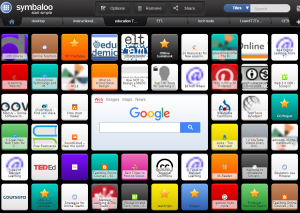
Are you looking for a useful tool to facilitate collaborative work for your students? For the past year, I have been exploring the use of Padlet, a free online application that serves as a ‘multi-media friendly, free-form, real-time wiki’ (according to Padlet.com). This easy to use tool allows you to easily provide content for your students online and customize it in many creative ways.
In a nutshell, Padlet works like a digital bulletin board or canvas. Once you have created your free account at https//:padlet.com, you can create individual ‘walls’ or padlets on which you can place content. An unlimited number of users can contribute to a padlet at the same time, making collaborative work very easy. By double-clicking anywhere on the screen, you can insert text, video, documents, images, or other padlets. Your padlet with all of its content can then be shared with your students via email, link, or on social media. Continue reading









